David Stairs
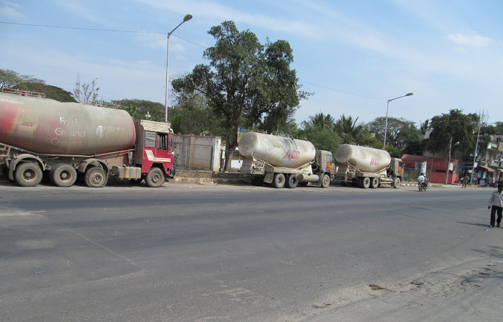
Cement trucks parked along Doddaballapur Road
Every environment has its signature building material. In Africa, rammed earth and thatch were, for centuries, the default until they gave way to bricks and mortar. I’ve always thought of North America as the wood construction capital of the universe, due to its wealth of forests. The trees of Michigan fueled westward expansion in the 19th century, and built many a balloon frame home.
India has not always been this way, but these days cement seems to be the universal material of choice. India is the world’s second largest producer of cement, after China, producing 159.43 million metric tons in fiscal 2009-10. The production is fueled by a real estate boom and dramatic government expenditures for infrastructure. The building in which I sit is part of a block-long complex of cast concrete flats ten stories tall. But it would be obtuse to limit my observations merely to buildings. In India, all sorts of objects and structures utilize concrete/cement to a very large degree.
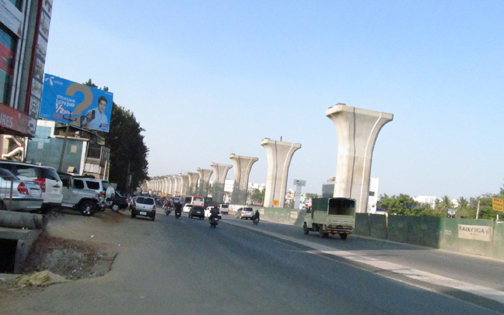
Take road construction. Americans are used to seeing concrete and steel I-beam overpasses on their highway system. But nothing I’ve ever encountered compares to the flyover under construction to Bangalore International Airport. Composed of gigantic reinforced columns topped by a huge platform, the roadbed is built by a massive sliding crane that hoists pre-cast sections into place.

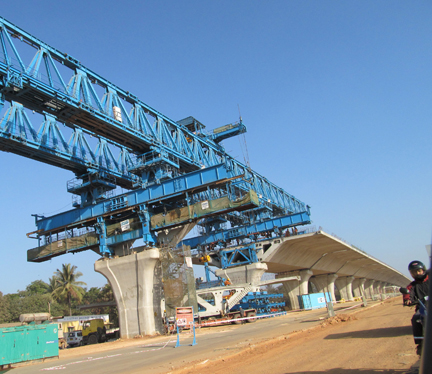
A similar sectional construction technique was utilized for the huge overhead urban metro rail system that runs above Mahatma Gandhi Road downtown. The relation of the overhead structure with the dwarfed temples beneath creates a startling juxtaposition.

One of my perambulations took me past a cast concrete water tower, of which there are many, and a small local reinforced concrete construction that looks a lot like the contemporary cement/pole construction I wrote about back in 2006 during my last trip to Uganda. These structures are nowhere near earthquake proof, but Bangalore is not situated along any active faults, thus the affordable buildings proliferate.
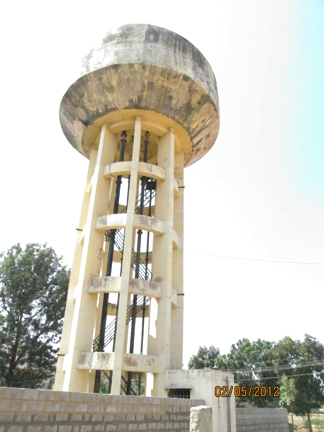
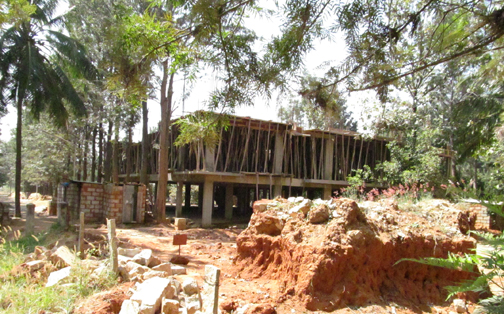
For me, though, the ultimate example is always the simplest, not the most awe inspiring. Along most roadways in Bangalore, the power poles are made of cast reinforced cement. They are not pretty, really rather pedestrian, and they replace wooden or metal versions of yesteryear. But these poles have the simple beauty of being strong, longlasting, non-conductive, and cheap. Three cheers for mundanity!
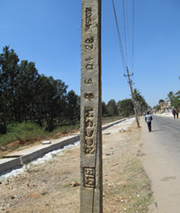
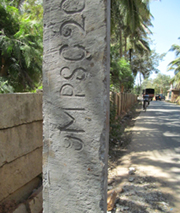
David Stairs is the founding editor of Design-Altruism-Project











Leave a Reply
You must be logged in to post a comment.